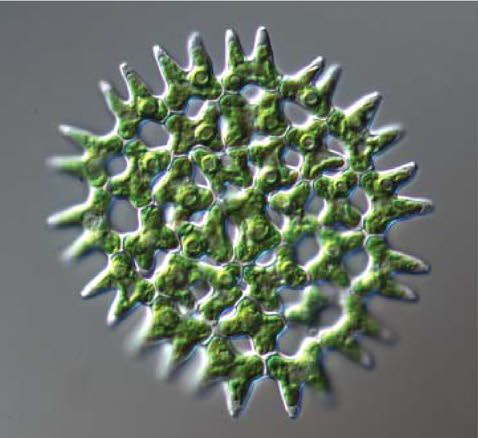
McManus, H.A., K. Fučíková, P.O. Lewis, L.A. Lewis & K.G. Karol. 2018. Organellar phylogenomics inform systematics in the green algal family Hydrodictyaceae (Chlorophyceae) and provide clues to the complex evolutionary history of plastid genomes in the green algal tree of life. American Journal of Botany 105(3): 315–329. pdf
The abstract reads: PREMISE OF THE STUDY: Phylogenomic analyses across the green algae are resolving relationships at the class, order, and family levels and highlighting dynamic patterns of evolution in organellar genomes. Here we present a within- family phylogenomic study to resolve genera and species relationships in the family Hydrodictyaceae (Chlorophyceae), for which poor resolution in previous phylogenetic studies, along with divergent morphological traits, have precluded taxonomic revisions.
METHODS: Complete plastome sequences and mitochondrial protein-coding gene sequences were acquired from representatives of the Hydrodictyaceae using next-generation sequencing methods. Plastomes were characterized, and gene order and content were compared with plastomes spanning the Sphaeropleales. Single-gene and concatenated-gene phylogenetic analyses of plastid and mitochondrial genes were performed.
KEY RESULTS: The Hydrodictyaceae contain the largest sphaeroplealean plastomes thus far fully sequenced. Conservation of plastome gene order within Hydrodictyaceae is striking compared with more dynamic patterns revealed across Sphaeropleales. Phylogenetic analyses resolve Hydrodictyon sister to a monophyletic Pediastrum, though the morphologically distinct P. angulosum and P. duplex continue to be polyphyletic. Analyses of plastid data supported the neochloridacean genus Chlorotetraëdron as sister to Hydrodictyaceae, while conflicting signal was found in the mitochondrial data.
CONCLUSIONS: A phylogenomic approach resolved within-family relationships not obtainable with previous phylogenetic analyses. Denser taxon sampling across Sphaeropleales is necessary to capture patterns in plastome evolution, and further taxa and studies are needed to fully resolve the sister lineage to Hydrodictyaceae and polyphyly of Pediastrum angulosum and P. duplex.